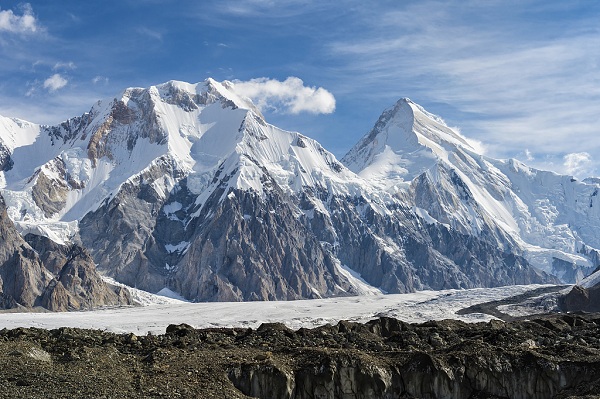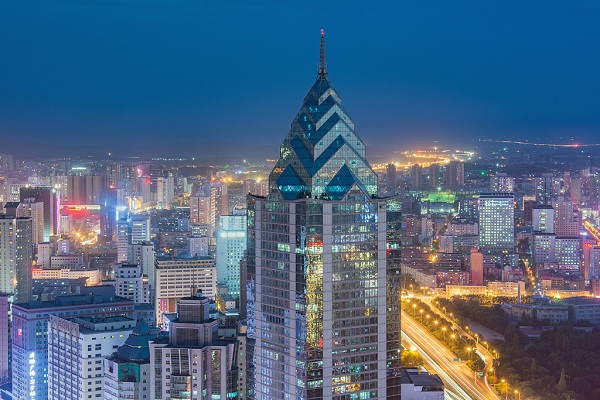Discovering Xinjiang, the largest administrative division in Northwest China

Xinjiang Uygur autonomous region is located in the central part of the Eurasian continent, on the northwest border of China.
It covers about one-sixth of the country’s total territory, 1.66 million square kilometers, making it the largest administrative division with the longest land frontier and most neighboring countries in China. Xinjiang borders eight countries: Russia, Kazakhstan, Kyrgyzstan, Tajikistan, Pakistan, Mongolia, India and Afghanistan. Xinjiang also served as a key hub on the renowned Silk Road in ancient China, while now it is an unavoidable part of the railway leading to the second Eurasia Continental Bridge.
However, only about 4.3 percent of its territory is habitable. The rest is mostly desert such as the Gobi, snow-capped mountains and glaciers. China’s largest desert, Takla Makan Desert, is in this region. But in these unpopulated areas are scattered some special landscapes and unique natural scenery like the Flaming Mountains and Yadan Spectacle.

Xinjiang is rich in natural resources such as rivers, minerals, forests and plants, animals and mountains. It has 500 rivers in the basins of Tianshan Mountain, including the Tarim River and the Ili River.
The region has a unique landscape which is called “three mountains surrounding two basins”. These features are, from north to south, Altai Mountains, Dzungarian Basin, Tianshan Mountains, Tarim Basin and Kunlun Mountains. The Tianshan Mountains, in the middle, divide this autonomous region into two totally different parts in the north and the south. If the north part are mountains and grasslands like the Kanas Nature Reserve and Narat Grassland. The south part features deserts such as the Gobi and the Takla Makan Desert. The north part has a pasture-based culture, while the south has an agricultural society.

Its capital city, Urumqi, is located in the north. The city has many gorgeous landscape features such as Red Hill and Southern Pasture, as well as featured cultural relics like Tartar Mosque and Qinghai Mosque. Urumqi was also an important city along the world-famous Silk Road, an historically important international trade route between China and the Mediterranean, which extended as far as present-day Rome. Some other important cities in the region along the Silk Road include Kashgar and Turpan, which boast places of interest like the Id Kah Mosque, and Karez System.

Situated far from the sea and encircled by high mountains, Xinjiang has a typical continental climate with low annual rainfall, many hours of sunshine and a large daily temperature range. These weather conditions are favorable for sugar accumulation in fruit, so the area is richly cultivated with fruit, especially melons. It is famous as the “hometown of fruit and melons”. The best-known fruits are grapes and honeydew melon.
In general, winters there are very cold, springs are often windy, and summers are extremely hot. The best time to visit is early autumn, when the days are long, the sky is clear and the temperature is more bearable. Another excellent reason to visit at that time is the abundance and availability of delicious melons and fruit.
Xinjiang is home to 47 ethnic minorities, which together account for 60 percent of its population. Among the 47 ethnic minorities, 13 are native, including the Uygur, the major ethnic group in the region. The Uygur have their own language and religious belief, Islam. Their traditional clothes are long gowns called qiapan. As well, they wear small, beautifully embroidered hats called duopa.
The main foods of the Uygur are nang (a kind of crusty pancake) and hand-drawn noodles. Hand pilaf and roast meat are usually offered during festivals or to guests. Their roast mutton chop is famous all over China and can be found in almost every city in the country.
The Uygur residence is usually flat-topped with a skylight. Inside, there are usually a fireplace and recess, one used for cooking and keeping warm, while the other is used for storing daily articles. Both the inside and outside of the residence are decorated with colorful ornamentation.
The most famous traditional festivals of the Uygur are Rozah and Corban Festival. Rozah is the fast-breaking festival of Islam, while the Corban Festival is the New Year’s Day of the Islamic calendar. Last, but not least, the Uygur are very good at dancing and singing. Sainaimu is one of the most popular dances and their 12 Mukamu is renowned as the “treasure of eastern music”.
MOST POPULAR
- 1 Mid-year snapshot: China's high-quality development
- 2 China moves to create first-class business environment in Beijing-Tianjin-Hebei region
- 3 Alipay app available in 16 languages to facilitate foreigners traveling in China
- 4 China further relaxes foreign investment restrictions, vows to promote services trade
- 5 China continues to see rising number of foreign visitors thanks to favorable policies
Editors' Picks
 Infographic:
Favorable policies boost 'China Travel' trend
Infographic:
Favorable policies boost 'China Travel' trend
 Infographic:
China's reform and opening-up: Key measures
Infographic:
China's reform and opening-up: Key measures
 Infographic:
A look at China's economy in July 2024
Infographic:
A look at China's economy in July 2024




